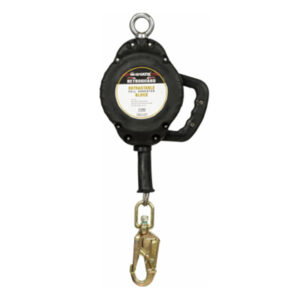Creating an immersive audio experience in living rooms and open spaces requires more than just high-quality speakers. Proper ceiling speaker placement for perfect sound is essential to ensure even coverage, clear dialogue, and a rich surround sound experience. In open floor plans or larger living areas, achieving balanced audio can be challenging due to varying room dimensions, furniture placement, and acoustics.
XTEN-AV, a leading AV design software, offers tools to plan, visualize, and optimize ceiling speaker layouts for any space. By leveraging professional-grade software, designers and AV enthusiasts can ensure every seat in the room enjoys consistent, high-quality audio. In this guide, we explore the best strategies for ceiling speaker placement in living rooms and open spaces.
XTEN-AV: A Powerful Tool for Speaker Placement
XTEN-AV provides an integrated platform for designing audio visual systems with precision. Its capabilities include:
-
3D Room Modeling – Simulate speaker coverage and identify potential dead zones.
-
Acoustic Analysis – Predict how sound interacts with walls, furniture, and ceilings.
-
Equipment Libraries – Access prebuilt models of ceiling speakers for accurate design.
-
Signal Flow Planning – Optimize audio routing for surround sound and multi-zone systems.
Using XTEN-AV, users can experiment with different ceiling speaker layouts and visualize the impact on sound quality before installation, reducing guesswork and improving results.
Principles of Ceiling Speaker Placement for Living Rooms
1. Understand Room Dimensions and Layout
The size, shape, and layout of a living room or open space directly influence ceiling speaker placement. Key factors include:
-
Room Size – Larger rooms may require additional speakers to maintain consistent coverage.
-
Open Floor Plans – Sound can disperse unevenly, so careful planning is needed to avoid dead zones.
-
Seating Areas – Focus placement on primary listening positions to ensure the best audio experience.
By analyzing room characteristics, designers can determine the ideal speaker positions for balanced sound.
2. Speaker Configuration
The choice of speaker configuration depends on the desired audio experience. Common options include:
-
5.1 Surround Sound – Standard setup with front left, center, front right, and two rear speakers.
-
7.1 Surround Sound – Adds two additional rear speakers for more immersive audio.
-
Dolby Atmos – Incorporates height channels to provide vertical dimension and enhanced immersion.
Each configuration has unique placement guidelines to ensure even coverage and proper audio imaging.
3. Optimal Speaker Height and Angles
For ceiling speaker placement for perfect sound, height and angles are critical:
-
Height – Install speakers at a height that allows sound to travel evenly across listening areas.
-
Angles – Direct speakers toward main seating positions to avoid sound reflections and dead zones.
-
Spacing – Maintain even spacing between speakers to create a balanced sound field.
XTEN-AV’s simulation features allow designers to visualize sound distribution and adjust placement for maximum effectiveness.
Tips for Ceiling Speaker Placement in Living Rooms
-
Position Front Speakers Strategically – Front left, center, and right speakers should align with the main viewing or listening area to provide clear dialogue and immersive sound.
-
Add Surround Speakers – Rear and side speakers should be placed slightly above ear level and aimed toward primary listening zones.
-
Consider Height Channels – For Dolby Atmos or advanced setups, incorporate ceiling speakers to provide vertical sound effects that enhance immersion.
-
Account for Furniture and Obstacles – Avoid placing speakers directly above large furniture that may obstruct sound.
-
Simulate and Test Coverage – Use XTEN-AV to model sound propagation and adjust speaker placement for even coverage.
-
Balance Multi-Zone Audio – In open spaces, ensure multiple zones receive consistent audio levels without interference.
Following these tips ensures optimal audio performance in living rooms and open spaces.
Challenges in Open Spaces
-
Sound Dispersion – Open areas can cause uneven audio distribution if speakers are not positioned carefully.
-
Multiple Seating Zones – Different listening areas may require additional speakers or zoning adjustments.
-
Acoustic Interference – Hard surfaces like tile floors or glass walls can reflect sound and create echoes.
Using AV design software like XTEN-AV helps address these challenges by simulating acoustics and guiding placement decisions.
Common Mistakes to Avoid
-
Ignoring Listening Zones – Failing to account for primary and secondary seating areas can lead to inconsistent sound.
-
Uneven Spacing – Speakers placed too close or too far apart create dead spots or overly loud areas.
-
Overlooking Room Acoustics – Reflections from walls, ceilings, and furniture can affect clarity if not considered in placement.
-
Neglecting Subwoofer Integration – Proper low-frequency coverage is essential for a full surround sound experience.
XTEN-AV can help designers avoid these mistakes by providing visual simulations, acoustic predictions, and placement recommendations.
Benefits of Using AV Design Software
-
Precision Placement – Ensure speakers are positioned for maximum audio coverage and quality.
-
Time Savings – Reduce trial-and-error installation and minimize rework.
-
Professional Results – Create layouts that meet client expectations and provide consistent sound.
-
Multi-Room Coordination – Plan audio zones in open spaces and adjacent rooms for uniform performance.
By leveraging AV design software, integrators and enthusiasts can achieve ceiling speaker placement for perfect sound with confidence.
Conclusion
Achieving the best ceiling speaker placement in living rooms and open spaces requires careful planning, knowledge of room acoustics, and attention to listening zones. Proper height, spacing, and angles are critical to delivering balanced, immersive sound.
XTEN-AV provides an advanced platform for planning, simulating, and optimizing ceiling speaker layouts, helping designers and integrators achieve professional-quality audio with minimal guesswork. By combining careful planning with AV design software, ceiling speakers can deliver rich, immersive surround sound that enhances any living room or open space.
Whether setting up a home theater, a multi-zone open space, or a high-end entertainment area, leveraging AV design software ensures that every speaker is perfectly positioned for optimal performance and listener satisfaction.


